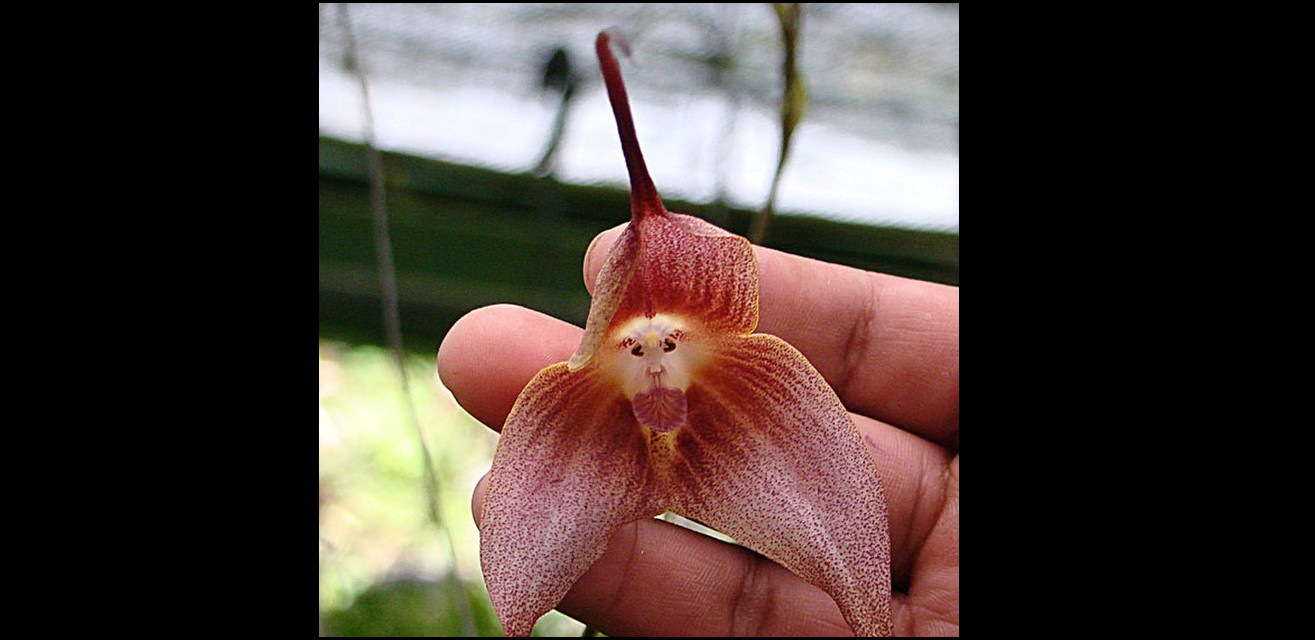The Monkey-Faced Orchid, scientifically known as Dracula simia, is a captivating and rare species that mesmerizes botanists and flower enthusiasts alike with its uncanny resemblance to a monkey’s face. Native to the cloud forests of southeastern Ecuador and Peru, this orchid thrives at altitudes between 1,000 to 2,000 meters, where the cool, moist environment provides ideal growing conditions. Each blossom, with its soft, velvety petals and intricate markings, seems to gaze back at the observer with a whimsical expression, making it one of the most fascinating and sought-after orchids in the world.
Monkeys know of them
The cloud forests of southeastern Ecuador and Peru, where the Monkey-Faced Orchid (Dracula simia) originates, are home to various species of monkeys. These biodiverse regions provide habitat for several monkey species, such as the woolly monkeys (Lagothrix), spider monkeys (Ateles), and howler monkeys (Alouatta). The presence of these primates adds to the richness of wildlife in these forests, contributing to the dynamic ecosystem where the Monkey-Faced Orchid thrives.
Difficult to grow
Growing the Monkey-Faced Orchid, presents a significant challenge for the home gardener due to its demanding environmental requirements. This orchid thrives in the cool, moist conditions of its native cloud forests, necessitating high humidity, consistent moisture, and temperatures that rarely fluctuate beyond a narrow range. Replicating these conditions in a home setting can be daunting, as the orchid is highly sensitive to temperature changes, and inadequate humidity can quickly lead to desiccation. Additionally, the orchid requires well-ventilated but shaded environments, further complicating its cultivation outside of specialised greenhouses. The precise care and specialised conditions needed make this orchid a challenging yet rewarding endeavour for dedicated and experienced gardeners.
Getting it started
Starting the orchid, involves either seed propagation or acquiring a mature plant or seedling from a reputable supplier. Seed propagation is a complex process requiring sterile conditions and precise nutrient mediums, often performed in a laboratory setting due to the orchid’s intricate germination needs. For home gardeners, purchasing a young plant or division from a specialised orchid nursery is a more practical option. These nurseries often provide detailed care instructions, which are crucial for successful acclimation. Once acquired, the orchid should be potted in a well-draining, moisture-retentive medium such as sphagnum moss or an orchid mix, ensuring it receives high humidity, consistent moisture, and appropriate light conditions to mimic its natural habitat.
The benefits
Growing the Monkey-Faced Orchid offers several unique benefits that extend beyond its captivating appearance. Cultivating such an unusual plant provides a rewarding challenge for orchid enthusiasts, enhancing their gardening skills and knowledge. The orchid’s distinct and rare blooms can become a striking centerpiece in any collection, sparking curiosity and admiration from visitors. Additionally, successfully growing Dracula simia fosters a deeper appreciation for biodiversity and the delicate ecosystems these orchids inhabit. This experience can inspire a greater commitment to conservation efforts and the protection of rare species. The sense of accomplishment and connection to nature derived from nurturing such an extraordinary plant adds immeasurable value to the gardening experience.
